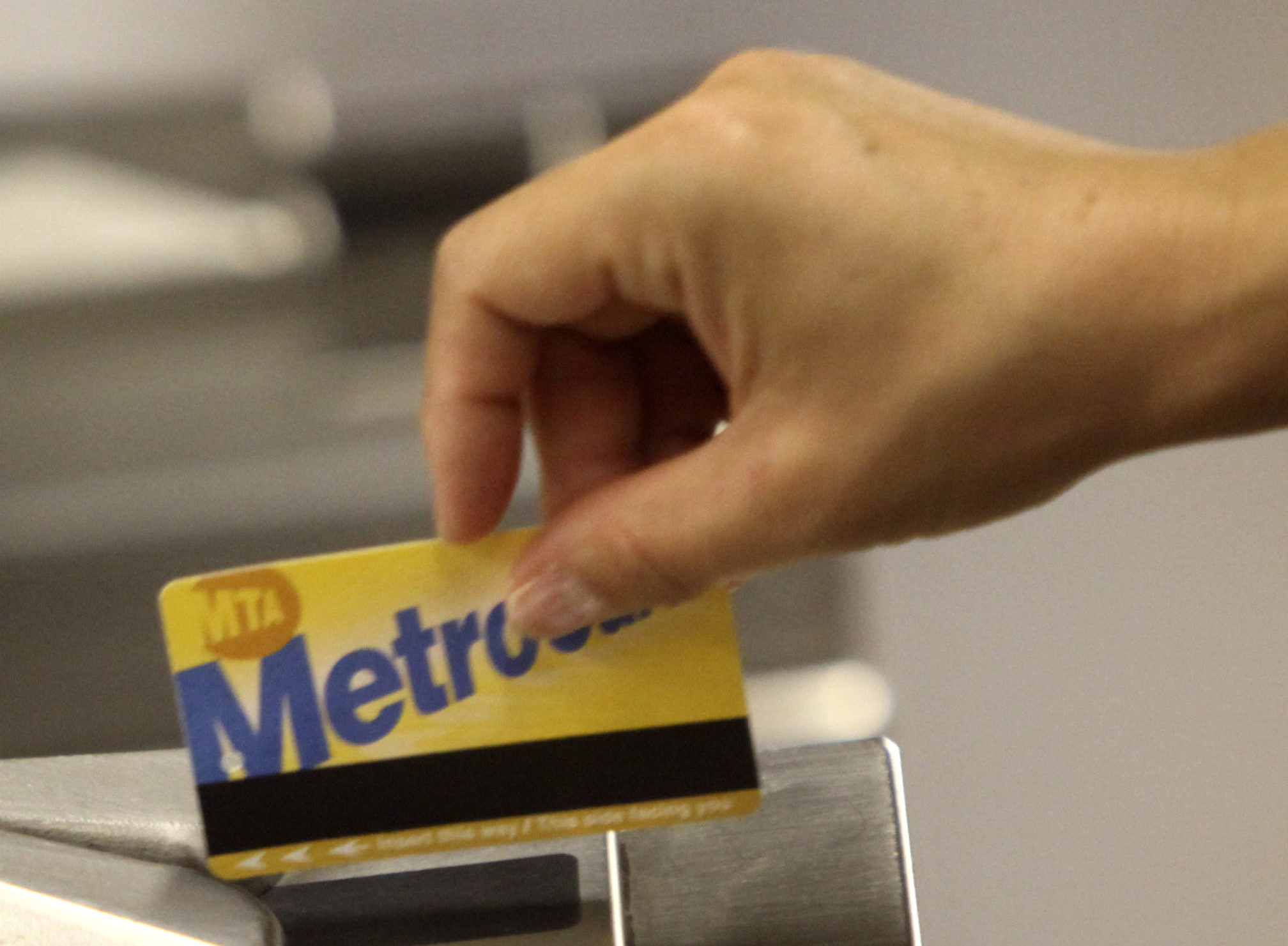Could ‘Fair Fares’ draw more riders — without clogging the MTA?

A subway rider swipes a MetroCard. AP Photo/Seth Wenig
A new report from Boston shows that reducing fares for low-income straphangers significantly increases their ridership.
The report comes as New York City slowly rolls out its “fair fares” program, which has now enrolled over 50,000 New Yorkers to receive half-priced MetroCards.
“The study shows what we already knew: Reducing fares works,” said Danny Pearlstein, the policy and communications director at transit-advocacy group Rider’s Alliance.
